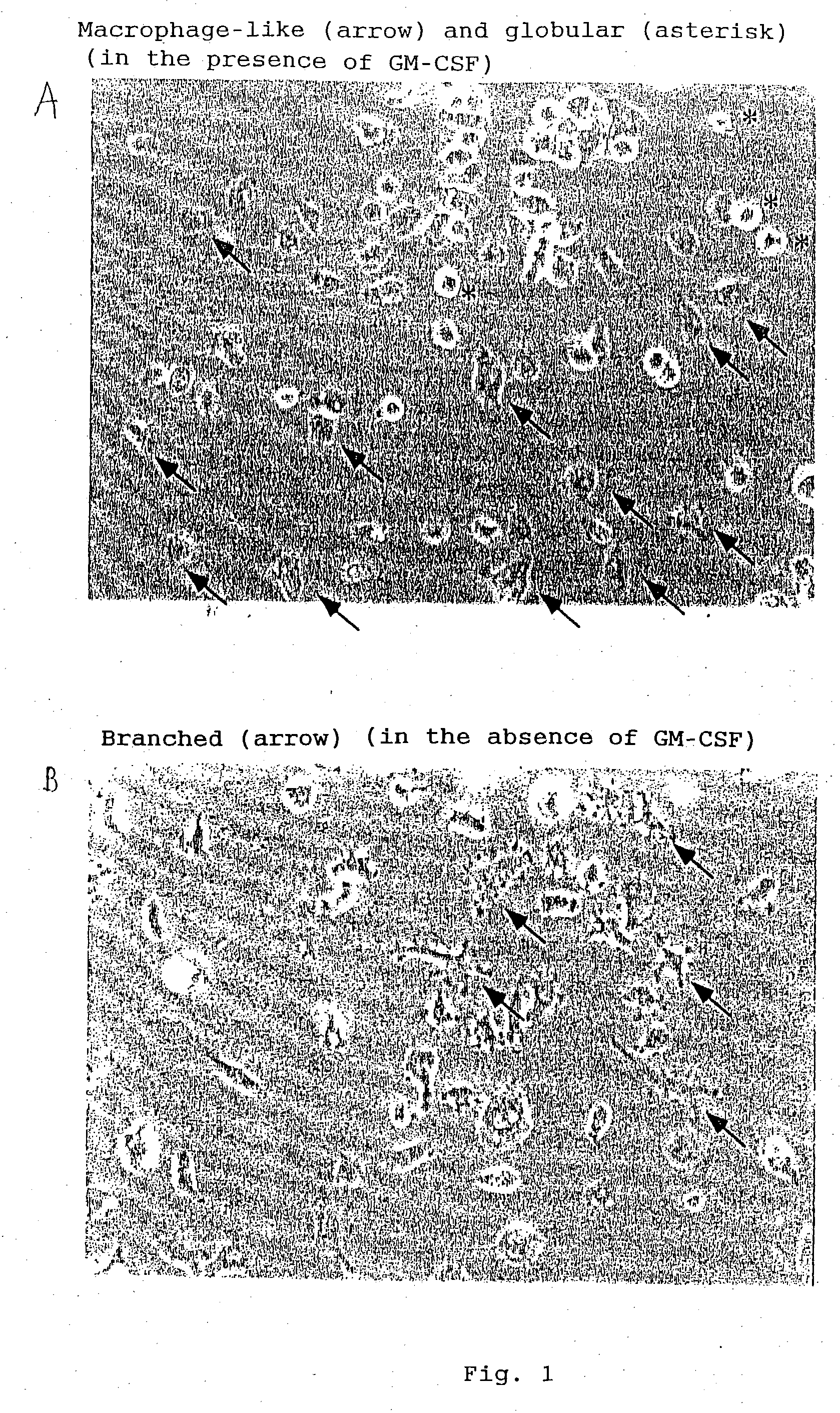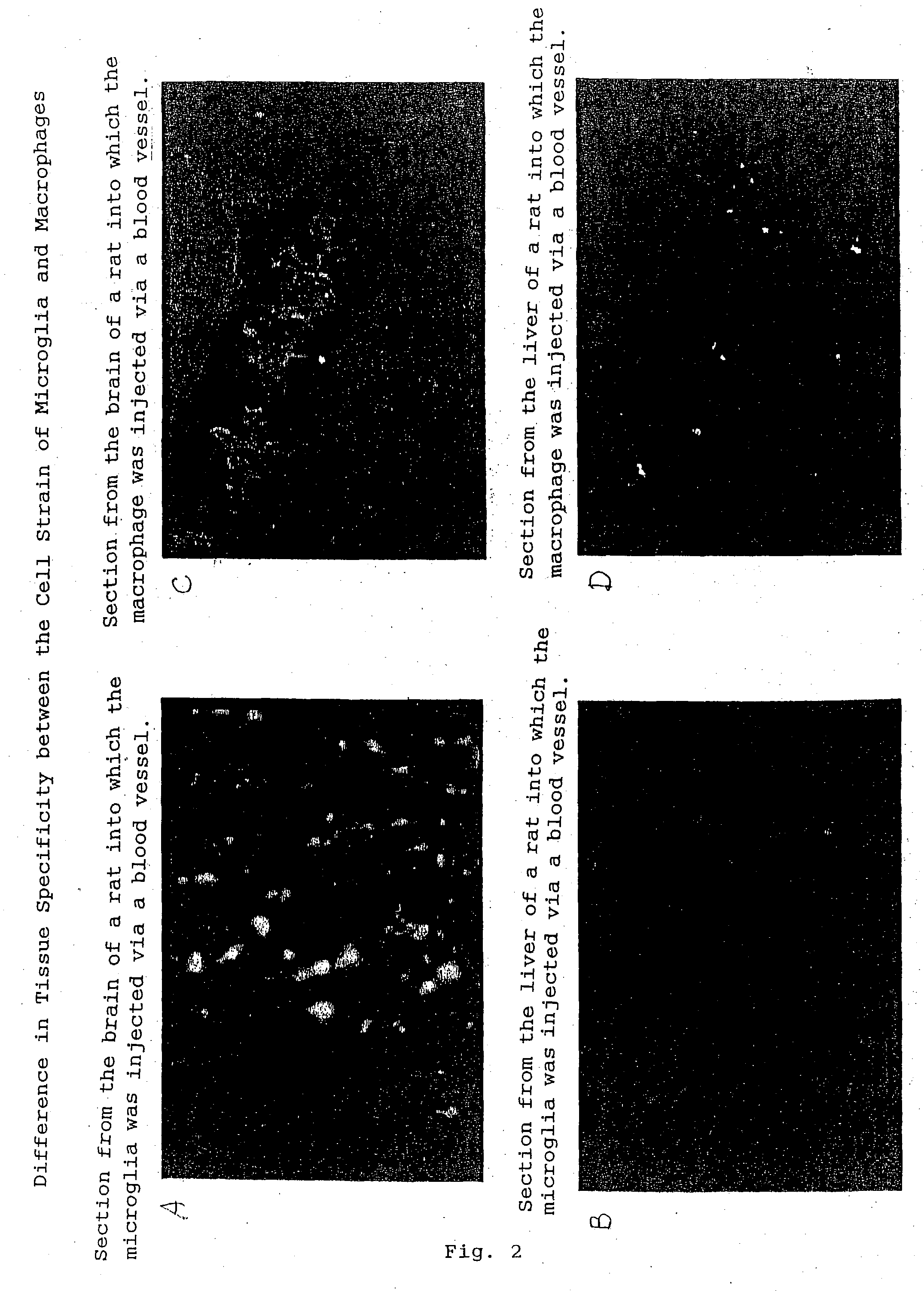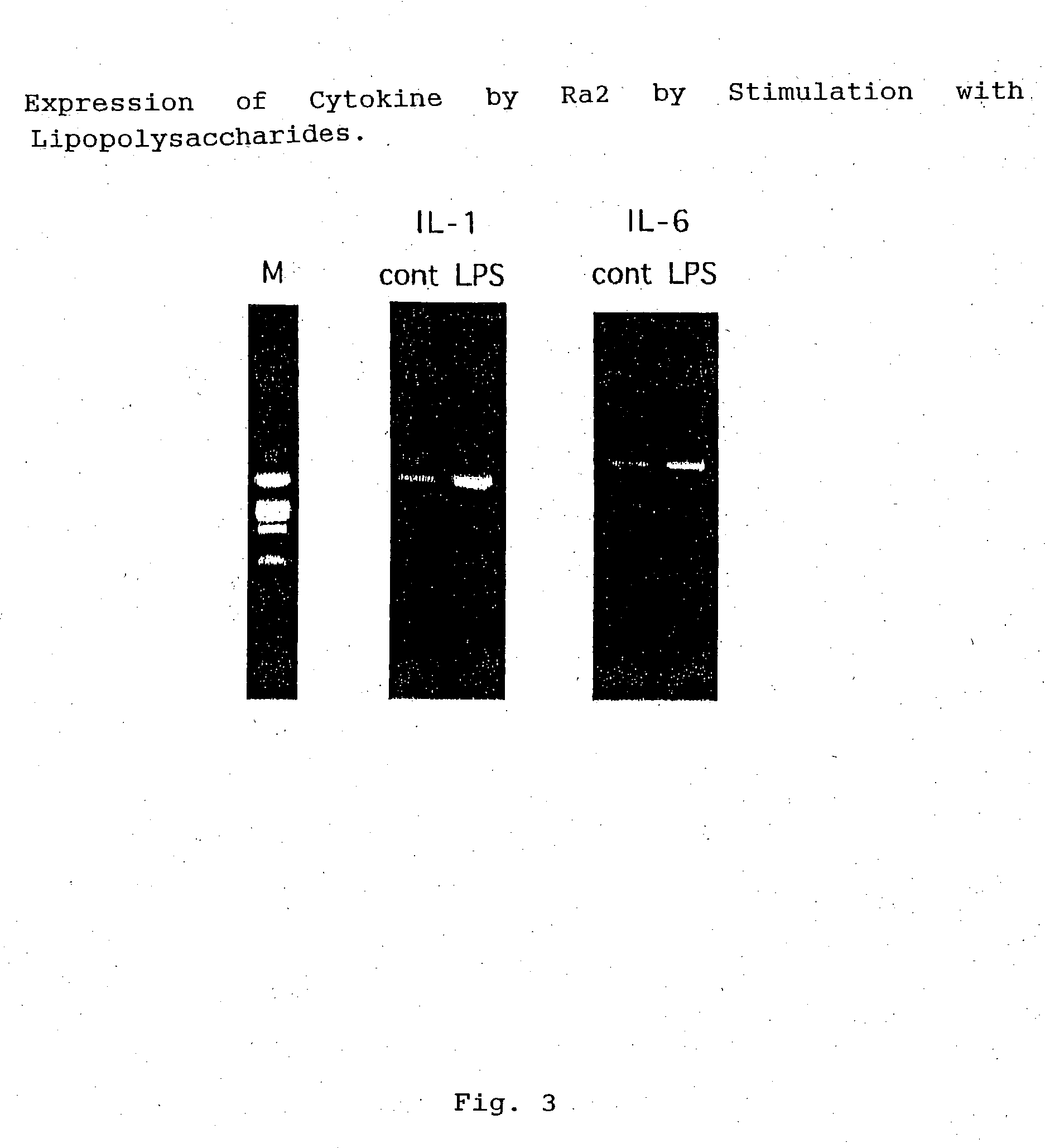Established cell line of microglia
a cell line and established technology, applied in the field of subcultivation established microglia, can solve the problems of difficult supplementary therapy, no other method than direct injection of the substance, and specific introduction into the brain, and achieve the effect of easy monitoring
- Summary
- Abstract
- Description
- Claims
- Application Information
AI Technical Summary
Benefits of technology
Problems solved by technology
Method used
Image
Examples
example 1
Separation of Established Clone of Microglia
[0061] (1) Isolation of Microglia
[0062] Brains were excised from newborn mice (C57BL6, op / op) and newborn rats (Fisher), and meninges were removed in an ice-cold microglia culture medium (referred to as Mi medium; Eagle's MEM containing 10% bovine serum, 0.2% glucose and 5 .mu.g / ml bovine insulin). The cells of meninges were divided into single cells with a Pasteur pipette or nylon mesh and then cultured in Mi medium. For the cells from the mouse brains, 20 ml Mi medium was used per one brain, and for the cells from the rat brains, 40 ml Mi medium was used per one brain, and the former cells were incubated in 2 culture vessels of 10 cm diameter and the latter cells in 4 culture vessels of 10 cm diameter in a CO.sub.2 incubator (5% CO.sub.2, 95% air) at 37.degree. C. for 10 to 14 days. The medium was exchanged with fresh one every 3 to 4 days.
[0063] When phase-bright round cells (PBRCS) appeared, the PBRCs were removed by mechanical shaking...
example 2
Introduction of a Gene into the Microglia of the Present Invention
[0088] Vector ptk.beta.(Clonetech Co.) for expression of lac Z gene derived from E. coli and DOTAP lipid (Boehringer-Mannheim Co.) were mixed to be a final concentration of 1 .mu.g / ml. The mixture was mixed with a serum-containing medium, then added to the established cell line of microglia of the present invention and treated for 16 hours. As the control, the established microglia of the invention into which the gene was not introduced, and macrophages obtained in the same manner as in Example 1, were used.
[0089] Then, the cells were further cultured for 48 hours in a usual medium (EMEM plus 10% FCS) and then stained with the fluorescent pigment as described in Example 1 (b-1) in order to examine whether the gene was delivered to and expressed in the brain, as follows: An artery in the left armpit of a mature rat (250 to 300 g) under anesthesia with Nembutal was exposed. After hemostatic treatment, a cannula was inse...
example 3
Introduction of Chemical Substance into the Microglia of the Invention, and Specific Introduction Thereof into the Brain
[0093] The fluorescent pigment PKH26 used in Example 1 forms granules in diluent B. The microglia cell strain of the present invention incorporates these granules specifically and transfers them to the brain, so the fluorescent pigment PKH26 was used as a model of chemical substance (anti-tumor drug).
[0094] As a result, when the established cell line of microglia of the present invention was introduced, many fluorescent cells were observed in normal brain cells but not observed in the liver. It therefore follows that the microglia of the present invention transfers the chemical substance (drug) into the brain specifically.
PUM
| Property | Measurement | Unit |
|---|---|---|
| Fluorescence | aaaaa | aaaaa |
Abstract
Description
Claims
Application Information
 Login to View More
Login to View More - R&D
- Intellectual Property
- Life Sciences
- Materials
- Tech Scout
- Unparalleled Data Quality
- Higher Quality Content
- 60% Fewer Hallucinations
Browse by: Latest US Patents, China's latest patents, Technical Efficacy Thesaurus, Application Domain, Technology Topic, Popular Technical Reports.
© 2025 PatSnap. All rights reserved.Legal|Privacy policy|Modern Slavery Act Transparency Statement|Sitemap|About US| Contact US: help@patsnap.com



